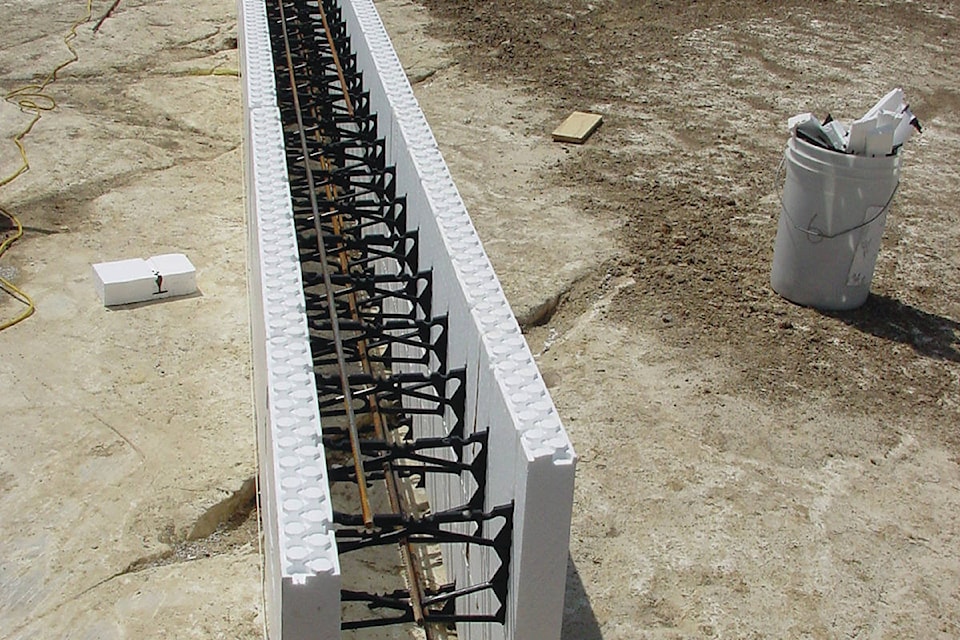An ICF product has many advantages over Styrofoam systems.
When a friend suggested I take a look at a type of insulated concrete form (ICF) called NEXCEM. I found the following information.
These blocks are made from mixing wood chips and cement in a slurry and then using a variety of moulds for constructing traditional looking cement blocks.
This 70 year old Swiss technology uses an 80 per cent mix of wood chips and Portland cement.
Each environmentally friendly insulating concrete form is constructed using recycled materials including softwood aggregates, all of which are by-products of the lumber industry.
Only clean wood is used ( no post-consumer waste or recycled demolition materials) to ensure the blocks are made from the highest quality materials that have no potential for incorporating toxic or other unhealthy ingredients from a questionable wood supply.
The concrete form construction process is as follows: The recycled waste wood is chipped into wood fibre which is then mineralized and bonded together with Portland cement.
This substance is moulded into the many shapes that comprise our full range of cement-bonded insulated concrete form construction materials.
Pictures show a standard looking cement block with fairly large air spaces throughout the blocks which would give the ICF its insulating properties as well as making a lighter block than the traditional cement blocks.
The ICF blocks are ideal for both below- and above-grade building construction. These thermal wall form units have a range of insulation values from R14 to R28+ (thermal mass not included).
Read More: COLUMN: Achieving contractor sustainability during uncertain times
The R-value for these components depends on the unit type. The higher R values are achieved by incorporated mineral fibre insulation inserts within the cavity of the ICF concrete unit at the time of manufacture.
The thickness of the insert incorporated will determine the overall R value of the wall assembly.
The manufactures claim a number of structural advantages including the following: Fireproof (4 hr. fire rating, 0 smoke spread, 0 flame spread), moisture resistant, soundproof durable (concrete construction), promotes healthy interiors (breathable, inhibits mold), energy efficient (high insulation values, no thermal bridges and insulation on exterior of thermal mass) and finally impact resistant (exterior surface won’t dent like polystyrene) as well as termite/vermin proof qualities.
The ICF blocks also have the following construction advantages. Lightweight, easily cut (like wood), allows for winter construction, zero voids, zero blowouts, Screw can be attached to any point on the surface and easy to finish.
The Nexcem ICF wall system can be used for housing and commercial applications using interlocking modular units that are dry-stacked (without mortar) and filled with concrete and reinforcing steel.
I did not see any information regarding the cost comparison of the ICF system compared to the traditional plywood or Styrofoam forms but would assume it depends on the specific applications and how much reinforcement and concrete is used for the final product.
I certainly like the concept of using residual wood fibre and if the manufacturing also included the incorporation of carbon dioxide into the production of cement it would go a long way to making a truly green construction product.
Jim Hilton is a professional agrologist and forester who has lived in the Cariboo Chilcotin region for over 40 years.
Now retired, Hilton still volunteers his skills with community forest organizations.
